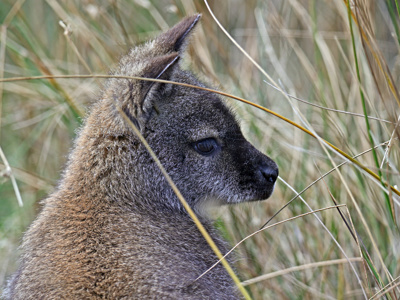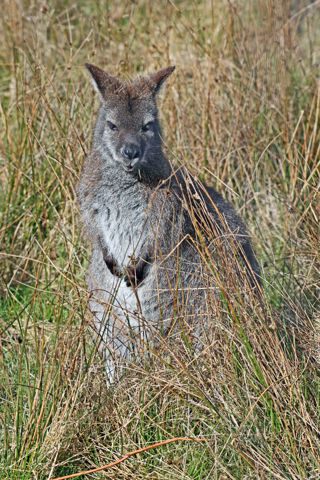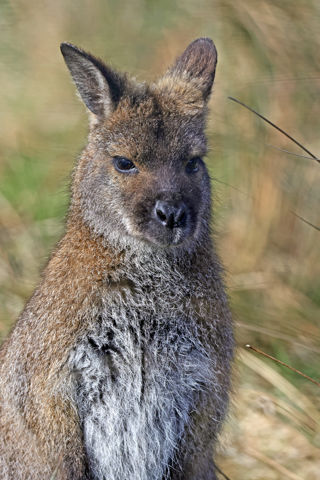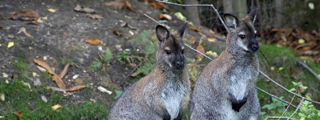
Red-Necked Wallaby
Macropus rufogriseus
Resembling kangaroos only smaller, red-necked wallabies can weigh up to 18kg and be nearly a metre long (excluding tail). Males are larger than females typically. Named due to the reddish patch of fur on their shoulders/ neck contrasting with their brown to grey coat.

Behaviour
Mainly nocturnal and normally solitary, but have been known to gather together when there is plenty of food available. When in groups, there is a social hierarchy, which is enforced with fighting as the last resort. Males leave their mothers range compared to females who often stay.

UK Status
It is thought that wallabies were established in England in the UK around 1900. Later introductions on Scottish islands happening around the 1970s. The total population of Red-necked wallabies in the UK is currently unknown. The isle of man population is thought to be estimated at 1740 individuals, whereas the Peak District population seems to be extinct now due to no sightings since 2000.

Threats
No major threats. In the UK, there are no natural predators. Youngsters are sometimes killed by dogs and foxes but this is not often.
Distribution
Like all marsupials, red-necked wallabies are native to Australia (mainly East Australia and Tasmania). Have been introduced to New Zealand, UK, Ireland, France and Austria (some intentional introductions, some being escapees from zoos or private collections).
Habitat
In Australia, they are found in Eucalyptus forests with patchworks of shrub and open areas such as agricultural land. This is also seen in the non-native populations. Often found in woodland that have nearby open areas such as heathland for feeding.
Diet
Herbivores, mainly feeding on grasses, roots, tree leaves, weeds, and some berries.
Did you know?
Red- necked wallaby females have been known to adopt offspring, known in the animal kingdom as alloparental care.

